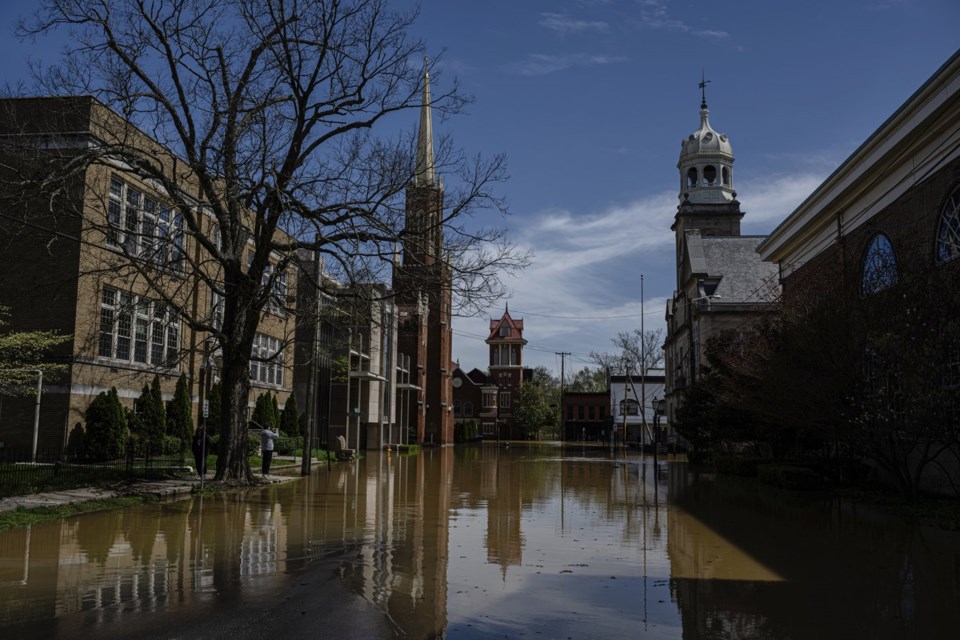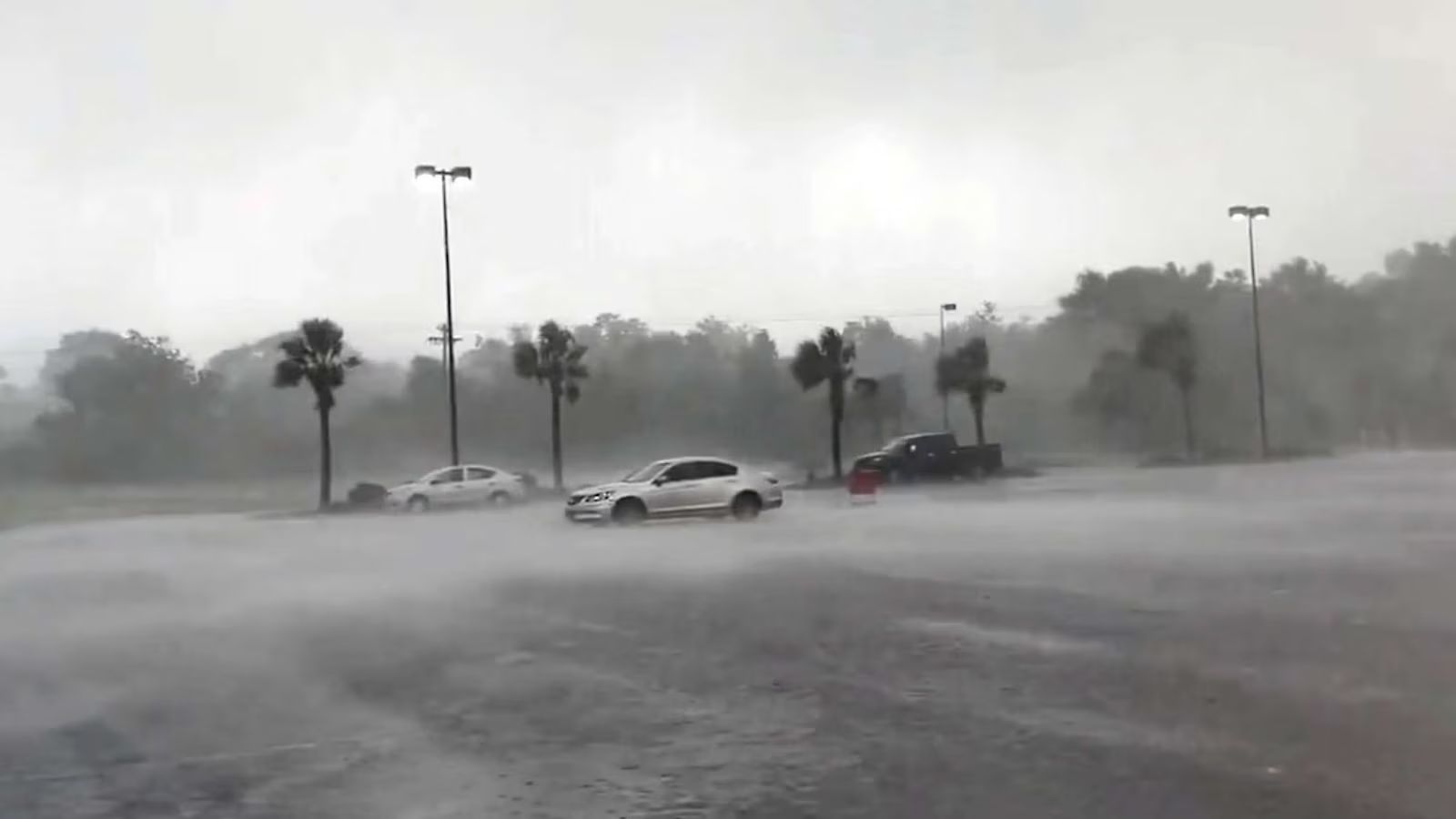In recent weeks, the United States South has witnessed a dramatic increase in the intensity and frequency of flooding events. Swollen rivers, exacerbated by a prolonged deluge of rain, have inundated towns across the region, leading to widespread devastation. These severe weather patterns, coupled with the human toll of natural disasters, have left communities grappling with the aftermath of catastrophic flooding. As the climate crisis accelerates, the US South’s vulnerability to intense storms, heavy rainfall, and the subsequent flooding of its river systems is becoming a pressing concern.
The Scope of the Deluge
For much of the US South, rainfall totals have been consistently higher than normal over the past few months, with certain areas experiencing up to 10 to 12 inches of rain in a matter of days. This prolonged deluge has led to rivers swelling beyond their banks, sending floodwaters into nearby towns, submerging homes, roads, and businesses. The situation has been most dire in states like Louisiana, Mississippi, Alabama, and Georgia, which have faced multiple flood events over the course of the season.
Rivers such as the Mississippi, the Pearl, and the Alabama have seen water levels rise to levels not observed in years, with authorities declaring states of emergency in several flood-stricken areas. The Mississippi River, one of the most significant waterways in the country, has been a focal point, with floodwaters encroaching upon vital transportation routes and threatening agricultural lands.
The Role of Climate Change
The growing frequency of intense storms and prolonged rainfall in the US South is not a coincidence. Research on climate change has shown that rising global temperatures are altering the atmosphere’s moisture-holding capacity, resulting in more extreme weather events. Warmer air can hold more moisture, which means that when storms do hit, they can release a tremendous amount of rainfall. Additionally, changes in weather patterns, such as the warming of ocean waters in the Gulf of Mexico, have been linked to shifts in the intensity and frequency of rainstorms across the South.
In the case of the current flooding, the prolonged deluge is partly a result of atmospheric rivers – narrow bands of concentrated moisture in the atmosphere that can cause large amounts of rain to fall over an extended period. These atmospheric rivers have become more frequent as the climate warms, creating a vicious cycle where the environment is increasingly unable to handle the amount of rain that it receives.
The Immediate Impact on Communities
As rivers overflow and floodwaters rush into towns and cities, the immediate impact on communities has been devastating. Families have lost their homes, businesses have been destroyed, and essential services like transportation have come to a halt. Entire neighborhoods in cities like Baton Rouge, New Orleans, and Mobile have been submerged, with residents forced to evacuate their homes at a moment’s notice. In some cases, people have been stranded on rooftops, awaiting rescue by emergency services.
One of the most significant consequences of these floods is the damage to homes and infrastructure. Many of the affected areas were already struggling economically, and the additional burden of flood damage is pushing some communities to the brink. Homes that have been in families for generations are now uninhabitable, while vital infrastructure like bridges, roads, and power lines has been compromised or destroyed. This has left communities isolated and vulnerable to further damage from subsequent storms.
Beyond the immediate physical damage, there is a profound psychological toll. Families who have lost everything in these floods now face the arduous task of rebuilding their lives from the ground up. The emotional strain on those affected is considerable, as many face uncertainty regarding the availability of aid, temporary housing, and financial support.
Environmental Impact and Ecosystem Disruption
The environmental consequences of such intense flooding are also severe. Wetlands, which play a critical role in absorbing excess water, are being overwhelmed by the sheer volume of rainfall, leading to significant erosion. These wetlands also act as important wildlife habitats, and their destruction has far-reaching implications for the region’s biodiversity.
Floodwaters have also carried debris and pollutants into rivers and streams, further contaminating the water supply. Industrial facilities, agricultural runoff, and sewage treatment plants often release toxins into floodwaters, which are then spread to a much larger area. This contamination can pose serious health risks for residents who are already struggling with the impacts of flooding.
For local farmers, the consequences of the floods are devastating. Fields that were once home to crops such as rice, cotton, and soybeans are now inundated with water, leaving farmers without harvests and facing considerable financial losses. Additionally, the rising waters have made it difficult for farmers to access their fields, further hindering their ability to recover.
Emergency Response and Recovery Efforts
In the wake of the floods, local and state authorities have sprung into action, coordinating emergency relief efforts and working to rescue those stranded by rising waters. The National Guard has been deployed to assist in search-and-rescue missions, while emergency shelters have been set up for displaced residents. However, the scale of the flooding has overwhelmed the response capabilities of some communities, leaving many to rely on volunteers and non-governmental organizations for assistance.
Federal aid has been requested in several states, with President Joe Biden approving disaster declarations for areas hardest hit by the floods. While federal resources are crucial in the immediate aftermath, the long-term recovery process will require significant investments in rebuilding infrastructure and providing assistance to affected families. In many cases, this process can take years, as communities must not only repair homes but also address the long-term economic and environmental damage caused by the floods.
The challenges of recovery are compounded by the ongoing threat of more storms. The US South is no stranger to hurricanes and tropical storms, and with the hurricane season in full swing, authorities are bracing for additional flooding events. As such, recovery efforts may be interrupted by new flooding, further delaying the region’s return to normalcy.
The Path Forward: Adaptation and Mitigation
Looking ahead, the challenge for communities in the US South is to adapt to the reality of a changing climate. This includes not only preparing for more frequent and intense flooding but also addressing the root causes of climate change itself. While individual communities may not have the resources to mitigate climate change on their own, regional cooperation and federal action are crucial in reducing emissions and making communities more resilient to the effects of climate change.
One approach that has gained traction in recent years is the implementation of “green infrastructure” projects. These initiatives focus on using natural systems, such as wetlands and forests, to absorb floodwaters and mitigate the impacts of flooding. Additionally, cities and towns are looking at ways to improve stormwater management systems, making them more effective at handling extreme weather events.
Another key strategy is building infrastructure that can withstand future flooding events. This includes elevating homes and businesses above flood levels, improving levee systems, and retrofitting buildings to withstand high waters. While these efforts require significant investment, they are seen as critical in ensuring the long-term resilience of communities in the face of a changing climate.
Conclusion
The flooding that has swept across the US South is a stark reminder of the devastating consequences of climate change. Swollen rivers, overflowing with water from prolonged rainstorms, have left communities reeling from the destruction. The loss of homes, infrastructure, and livelihoods is immeasurable, and the emotional and psychological toll on affected residents is significant. As the region moves forward in its recovery efforts, it is clear that addressing the root causes of climate change will be essential to mitigating future disasters. Only through collective action, innovation, and resilience can the US South begin to rebuild and prepare for the storms to come.




